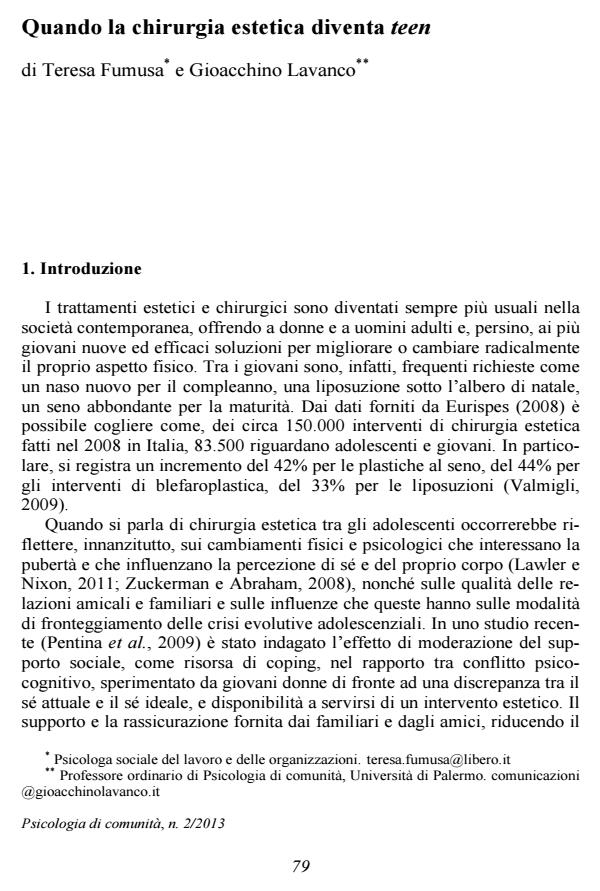Quando la chirurgia estetica diventa teen
Titolo Rivista PSICOLOGIA DI COMUNITA’
Autori/Curatori Teresa Fumusa, Gioacchino Lavanco
Anno di pubblicazione 2014 Fascicolo 2013/2
Lingua Italiano Numero pagine 12 P. 79-90 Dimensione file 59 KB
DOI 10.3280/PSC2013-002010
Il DOI è il codice a barre della proprietà intellettuale: per saperne di più
clicca qui
Qui sotto puoi vedere in anteprima la prima pagina di questo articolo.
Se questo articolo ti interessa, lo puoi acquistare (e scaricare in formato pdf) seguendo le facili indicazioni per acquistare il download credit. Acquista Download Credits per scaricare questo Articolo in formato PDF

FrancoAngeli è membro della Publishers International Linking Association, Inc (PILA)associazione indipendente e non profit per facilitare (attraverso i servizi tecnologici implementati da CrossRef.org) l’accesso degli studiosi ai contenuti digitali nelle pubblicazioni professionali e scientifiche
La ricerca si pone l’obiettivo di indagare alcune variabili psicosociali ritenute dalla letteratura sull’argomento elementi importanti dell’interesse per la chirurgia estetica, come la percezione corporea e l’Ego-resiliency, in un gruppo di 210 adolescenti e giovani donne del territorio palermitano. I dati mostrano come la percezione di sé abbia un ruolo centrale, essendo l’unica variabile tra quelle indagate che influisce sull’interesse per la chirurgia estetica. Inoltre, l’Ego-resiliency, ossia la capacità di gestire in modo flessibile i propri impulsi e le proprie emozioni e di adattarsi efficacemente alle richieste dell’ambiente, è fortemente legato alla percezione di sé, che, a sua volta, determina l’interesse per la chirurgia estetica.
Parole chiave:Chirurgia estetica, percezione corporea, percezione di sé, Ego-resiliency.
Teresa Fumusa, Gioacchino Lavanco, Quando la chirurgia estetica diventa teen in "PSICOLOGIA DI COMUNITA’" 2/2013, pp 79-90, DOI: 10.3280/PSC2013-002010